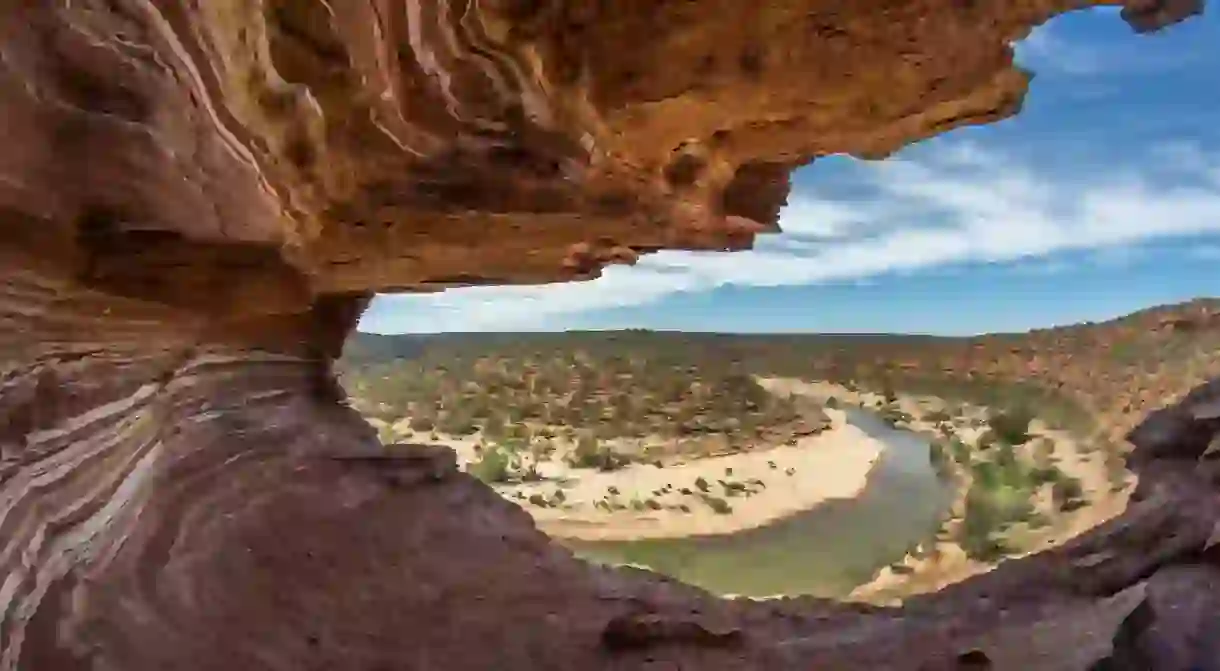The 10 Best Ecotourism Experiences in Western Australia

Australia’s largest state is home to plenty of great outdoors — more than two and a half million square kilometres worth (about 965,255 square miles), to be precise. Here are the top 10 environmental experiences you can find in the vast expanses of Western Australia.
Rottnest Island
Natural Feature

With turquoise water, white-sand beaches and countless tropical fish, this island paradise, situated just a quick ferry ride from Fremantle or Perth is a dream destination for snorkelers. But ‘Rotto’, as the locals call it, is most famous for its population of quokkas — cat-sized marsupials that look like miniature kangaroos, and who aren’t afraid to bounce up to visitors to pose for a selfie. Grab a bike and pedal around Rottnest’s 19 square kilometres (about 7 square miles) of pristine public land — just keep an eye out for quokkas on the road!
The Pinnacles
Natural Feature
These ancient desert sculptures are the sort of thing you can only find in the Australian desert, rising out of the bright yellow sand in the Nambung National Park that’s north of Perth. Dotted across the terrain like tombstones, the Pinnacles are limestone pillars made of seashells that date back millions of years ago when the ocean covered the land, before extensive weathering forged this otherworldly landscape.
Kings Park and Botanic Garden
Park

These four square kilometres (about 1.5 square miles) of immaculately curated gardens smack bang in the middle of Perth don’t just boast postcard views of the city centre — they also contain more than 300 species of native West Australian plants, as well as untamed bushland and dozens of diverse bird species. Kings Park is the largest inner-city park in the world, roughly 20 percent bigger than even New York’s Central Park.
Ningaloo Reef
Natural Feature

Tourists from around the world trek 1200 kilometres (745 miles) north of Perth to this remote corner of Western Australia for one thing: to go swimming with whale sharks. The largest fish in the world’s oceans feed along the fringing coral reef of the Ningaloo Coast between March and August, presenting a unique opportunity to swim face-to-fin with these 14-metre-long (45 feet) gentle giants. Book your tour with an eco-certified operator, such as Ningaloo Discovery.
Valley of the Giants Tree Top Walk
Forest

This tree top walk between Denmark and Walpole on Western Australia’s serene south coast towers above the forest canopy, providing a unique perspective on plant life that’s unique to this part of the world. Forty metres (about 131 feet) below the lofty walkway, a discovery centre and walking trail winds through 400-year-old red tingle trees that have origins stretching back 65 million years to the supercontinent of Gondwana.
Monkey Mia
Natural Feature

You won’t find any primates swinging between the trees in this place 900 kilometres (about 559 miles) north of Perth, but you will see bottlenose dolphins swimming close to the shore for a feed. Visitors can wade out knee deep under the careful supervision of park rangers as wild dolphins approach, paying a visit up to three times a day to be fed by hand. The world’s oldest largest living fossils, the Hamelin Pool Stromatolites, are also just a half-hour drive up the road.
Lucky Bay
Natural Feature

The Golden Outback region of Western Australia in the southwest of the state is dotted with a small handful of pink lakes, but you’d be mistaken if you thought they were the most photogenic locations around the town of Esperance. Lucky Bay, a secluded white-sand beach within the Cape Le Grand National Park, is gorgeous enough on its own — add dozens of kangaroos hopping all over the place and you’ve got yourself one of the most photogenic scenes in Australia.
Kalbarri National Park
Park

This national park 500 kilometres (about 310 miles) north of Perth offers a buffet of ecotourism experiences, from the dramatic coastal cliffs near the mouth of the Murchison River to the rugged inland desert landscapes. The Nature’s Window rock formation is a postcard image of the Kalbarri National Park, but the blooming wildflowers and 200-plus animal species are every bit as impressive as those craggy sandstone gorges.
Gantheaume Point
Archaeological site

The camel trains slinking down Cable Beach at sunset are Broome’s most famous sight, and the largest town in northern Western Australia’s Kimberley region is home to a much more ancient attraction. At very low tide, you can walk in the footsteps of dinosaurs at Gantheaume Point, where dinosaur footprints more than 130 million years old are preserved in the promontory’s sandstone. Stegosaur, Sauropod, Wintonopus, Theropod, Megolosauropus and Broomensis prints have all been identified.
Whale-watching in Albany
Natural Feature

For years, this sleepy village on Western Australia’s south coast was a whaling hotspot, but these days, the old whaling station has been converted into a museum celebrating the majestic mammals. Albany has one of the longest whale-watching seasons anywhere in Australia, with humpbacks, southern rights and blue whales all spotted over the second half of the year, as well as a rare pod of orcas congregating in the nutrient-rich waters of nearby Bremer Bay between February and April.













